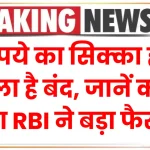
If you’ve invested your money in Fixed Deposits (FDs) thinking it’s a safe and easy way to grow your savings, you’re right—but there’s one important thing you must not ignore: tax on FD interest. Yes, the money you earn from FDs isn’t entirely yours to keep. It falls under taxable income, and you may have to pay income tax on fixed deposit interest income depending on how much you earn and your overall tax slab.
In this detailed guide, we’ll break it all down—what kind of tax applies on FD interest, how TDS works, ways to reduce or avoid tax legally, and step-by-step instructions on how to file this income properly in your ITR. Whether you’re a first-time investor or a senior citizen looking for smart financial tips, we’ve got you covered.
Tax on FD Interest in India
| Particulars | Details |
|---|---|
| Tax Applicability | FD interest is 100% taxable under ‘Income from Other Sources’ |
| TDS Threshold (Below 60 years) | ₹40,000 per financial year |
| TDS Threshold (Senior Citizens) | ₹50,000 per financial year |
| TDS Rate (with PAN) | 10% |
| TDS Rate (without PAN) | 20% |
| Forms to Avoid TDS | Form 15G (below 60 years), Form 15H (60 years+) |
| Advance Tax Requirement | If tax liability > ₹10,000/year |
| ITR Reporting Section | Income from Other Sources |
Fixed Deposits are a reliable and low-risk way to grow your savings, but don’t overlook the income tax on FD interest. Whether you’re earning ₹5,000 or ₹5 lakh in interest, it’s your responsibility to declare it and pay the right amount of tax. Use smart planning—like 15G/15H forms, slab-based investing, and senior citizen benefits—to stay compliant and save money.
What is FD Interest and Why is It Taxed?
A Fixed Deposit (FD) is a popular savings instrument offered by banks and post offices in India. You deposit a lump sum for a fixed period (say 1 to 5 years), and the bank pays you a fixed rate of interest, typically between 6% to 8% per annum.
However, what many people miss is this: the interest you earn is not tax-free. As per the Income Tax Act, 1961, any income earned from FDs is added to your annual income and taxed according to your income tax slab.
For example, if you earn ₹50,000 in FD interest and fall under the 20% income tax slab, you’ll have to pay ₹10,000 in tax (excluding cess/surcharge).
see also: FD Rates April 2025: If You Want to Invest Rs 10 Lakh in FD
How is TDS Deducted on FD Interest?
Let’s understand TDS (Tax Deducted at Source) in simple terms:
- Banks and post offices are legally required to deduct TDS on FD interest if it crosses the threshold in a financial year.
- Thresholds:
- ₹40,000 per year for individuals below 60
- ₹50,000 per year for senior citizens
- If your interest income exceeds the limit, 10% TDS will be deducted automatically (only if PAN is submitted).
- If PAN is not provided, 20% TDS will be deducted.
Note: TDS is deducted only on interest, not on the principal deposit.
How to Avoid TDS Legally Using Form 15G and 15H
If your total income is below the taxable limit (₹2.5 lakh for individuals below 60, ₹3 lakh for seniors), you can submit the following forms to avoid TDS:
| Form | Who Can Use It? |
|---|---|
| Form 15G | Individuals below 60 with income below taxable limit |
| Form 15H | Senior citizens (60+) with income below taxable limit |
Submit these forms at the beginning of the financial year to the bank where your FD is held.
Step-by-Step: How to Pay Income Tax on FD Interest
Here’s a simple guide to ensure you comply with tax laws while maximizing savings:
Step 1: Gather Your Interest Certificates
Ask your bank(s) to provide Form 16A or Interest Certificate listing how much interest you’ve earned in the year.
Step 2: Add It to ‘Income from Other Sources’
While filing your Income Tax Return (ITR), add this interest income under the section “Income from Other Sources.”
Step 3: Check How Much TDS Was Deducted
Refer to Form 26AS (or the new AIS – Annual Information Statement) to verify how much TDS your bank has already paid on your behalf.
- Login to: www.incometax.gov.in
- Go to “View Form 26AS” or “AIS” to check TDS.
Step 4: Calculate Final Tax Liability
Use an income tax calculator or consult a CA to determine your total tax. Subtract the TDS already paid.
Step 5: Pay Balance Tax if Needed
If your tax liability is more than the TDS, you must pay the difference using Challan 280 on the income tax portal.
Step 6: File Your ITR Accurately
Submit your return using:
- ITR-1 (Sahaj) if you have salary + FD income
- ITR-2 if you also have capital gains, etc.
Advance Tax on FD Interest
If the total tax on your interest income exceeds ₹10,000/year, you are required to pay advance tax in four installments during the year:
| Due Date | Advance Tax Payable |
|---|---|
| 15th June | 15% |
| 15th September | 45% |
| 15th December | 75% |
| 15th March | 100% |
Failing to pay may attract interest under Section 234B and 234C.
Special Tax Benefits for Senior Citizens
Senior citizens enjoy certain tax benefits under Section 80TTB:
- Deduction of up to ₹50,000 on interest income from savings and FDs
- No need to pay advance tax if they don’t have business income
This makes FDs a preferred choice for retirees looking for safe income with minimal tax.
Pro Tips to Save Tax on FD Interest
- Distribute FDs across family members in lower tax slabs to reduce overall tax.
- Go for quarterly/monthly interest payout to better manage cash flows and tax planning.
- Invest in 5-year Tax-Saver FDs that offer deduction under Section 80C (limit ₹1.5 lakh).
- Use your joint account holder’s PAN strategically to split interest income.
see also:
Tax on FD Interest FAQs
Q1. Is FD interest tax-free?
No, FD interest is fully taxable under the head “Income from Other Sources.”
Q2. How can I avoid TDS on FD interest?
Submit Form 15G or 15H if your income is below the taxable limit.
Q3. Do I need to file ITR if only income is from FD interest?
Yes, if your total income exceeds the basic exemption limit (₹2.5 lakh), you must file an ITR.
Q4. Is FD interest clubbed with salary for tax purposes?
Yes. It is added to your total income and taxed as per your slab.
Q5. What if TDS is more than my tax liability?
You can claim a refund while filing your ITR.











